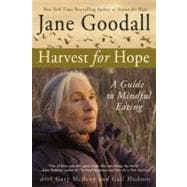
Note: Supplemental materials are not guaranteed with Rental or Used book purchases.
Purchase Benefits
What is included with this book?
| Introduction | xvii | ||||
| Chapter 1 Animals to Us | 1 | (13) | |||
|
3 | (3) | |||
|
6 | (2) | |||
|
8 | (3) | |||
|
11 | (1) | |||
|
12 | (2) | |||
| Chapter 2 A Celebration of Cultures | 14 | (23) | |||
|
17 | (4) | |||
|
21 | (2) | |||
|
23 | (2) | |||
|
25 | (2) | |||
|
27 | (3) | |||
|
30 | (7) | |||
| Chapter 3 How We Lost Commonsense Farming | 37 | (8) | |||
|
38 | (2) | |||
|
40 | (2) | |||
|
42 | (2) | |||
|
44 | (1) | |||
| Chapter 4 Seeds of Discontent | 45 | (21) | |||
|
47 | (1) | |||
|
48 | (3) | |||
|
51 | (3) | |||
|
54 | (3) | |||
|
57 | (2) | |||
|
59 | (4) | |||
|
63 | (3) | |||
| Chapter 5 Animal Factories: Farms of Misery | 66 | (16) | |||
|
69 | (2) | |||
|
71 | (3) | |||
|
74 | (2) | |||
|
76 | (1) | |||
|
77 | (1) | |||
|
78 | (1) | |||
|
79 | (3) | |||
| Chapter 6 Farming Animals: Hazards to Our Health | 82 | (15) | |||
|
82 | (1) | |||
|
83 | (1) | |||
|
84 | (1) | |||
|
85 | (1) | |||
|
86 | (1) | |||
|
87 | (2) | |||
|
89 | (1) | |||
|
90 | (7) | |||
| Chapter 7 Helping Farm Animals Live Better Lives | 97 | (20) | |||
|
99 | (1) | |||
|
100 | (1) | |||
|
100 | (2) | |||
|
102 | (1) | |||
|
103 | (2) | |||
|
105 | (6) | |||
|
111 | (1) | |||
|
112 | (5) | |||
| Chapter 8 Ravaging the Oceans and Seas | 117 | (18) | |||
|
119 | (2) | |||
|
121 | (3) | |||
|
124 | (3) | |||
|
127 | (3) | |||
|
130 | (1) | |||
|
131 | (1) | |||
|
131 | (4) | |||
| Chapter 9 Becoming a Vegetarian | 135 | (18) | |||
|
142 | (3) | |||
|
145 | (2) | |||
|
147 | (2) | |||
|
149 | (1) | |||
|
149 | (4) | |||
| Chapter 10 Global Supermarkets | 153 | (6) | |||
|
154 | (5) | |||
| Chapter 11 Taking Back Our Food | 159 | (16) | |||
|
160 | (2) | |||
|
162 | (6) | |||
|
168 | (1) | |||
|
169 | (1) | |||
|
170 | (5) | |||
| Chapter 12 Protecting Our Family Farmers | 175 | (16) | |||
|
176 | (8) | |||
|
184 | (1) | |||
|
184 | (4) | |||
|
188 | (3) | |||
| Chapter 13 Eat Local, Eat Seasonal | 191 | (17) | |||
|
193 | (1) | |||
|
194 | (1) | |||
|
195 | (2) | |||
|
197 | (1) | |||
|
198 | (4) | |||
|
202 | (6) | |||
| Chapter 14 An Organic Wave Worldwide | 208 | (10) | |||
|
209 | (2) | |||
|
211 | (1) | |||
|
212 | (2) | |||
|
214 | (1) | |||
|
215 | (3) | |||
| Chapter 15 At Home and at School: Feeding Our Children | 218 | (20) | |||
|
222 | (2) | |||
|
224 | (6) | |||
|
230 | (2) | |||
|
232 | (2) | |||
|
234 | (2) | |||
|
236 | (2) | |||
| Chapter 16 Obesity, Fast Food, and Waste | 238 | (12) | |||
|
242 | (1) | |||
|
242 | (2) | |||
|
244 | (2) | |||
|
246 | (1) | |||
|
247 | (1) | |||
|
248 | (2) | |||
| Chapter 17 The Looming Water Crisis | 250 | (11) | |||
|
252 | (1) | |||
|
253 | (1) | |||
|
253 | (1) | |||
|
254 | (4) | |||
|
258 | (1) | |||
|
259 | (2) | |||
| Chapter 18 The Story of Nebraska | 261 | (17) | |||
|
264 | (1) | |||
|
264 | (2) | |||
|
266 | (2) | |||
|
268 | (3) | |||
|
271 | (7) | |||
| Chapter 19 Harvest for Hope | 278 | (9) | |||
|
283 | (2) | |||
|
285 | (2) | |||
| Resources | 287 |
The New copy of this book will include any supplemental materials advertised. Please check the title of the book to determine if it should include any access cards, study guides, lab manuals, CDs, etc.
The Used, Rental and eBook copies of this book are not guaranteed to include any supplemental materials. Typically, only the book itself is included. This is true even if the title states it includes any access cards, study guides, lab manuals, CDs, etc.